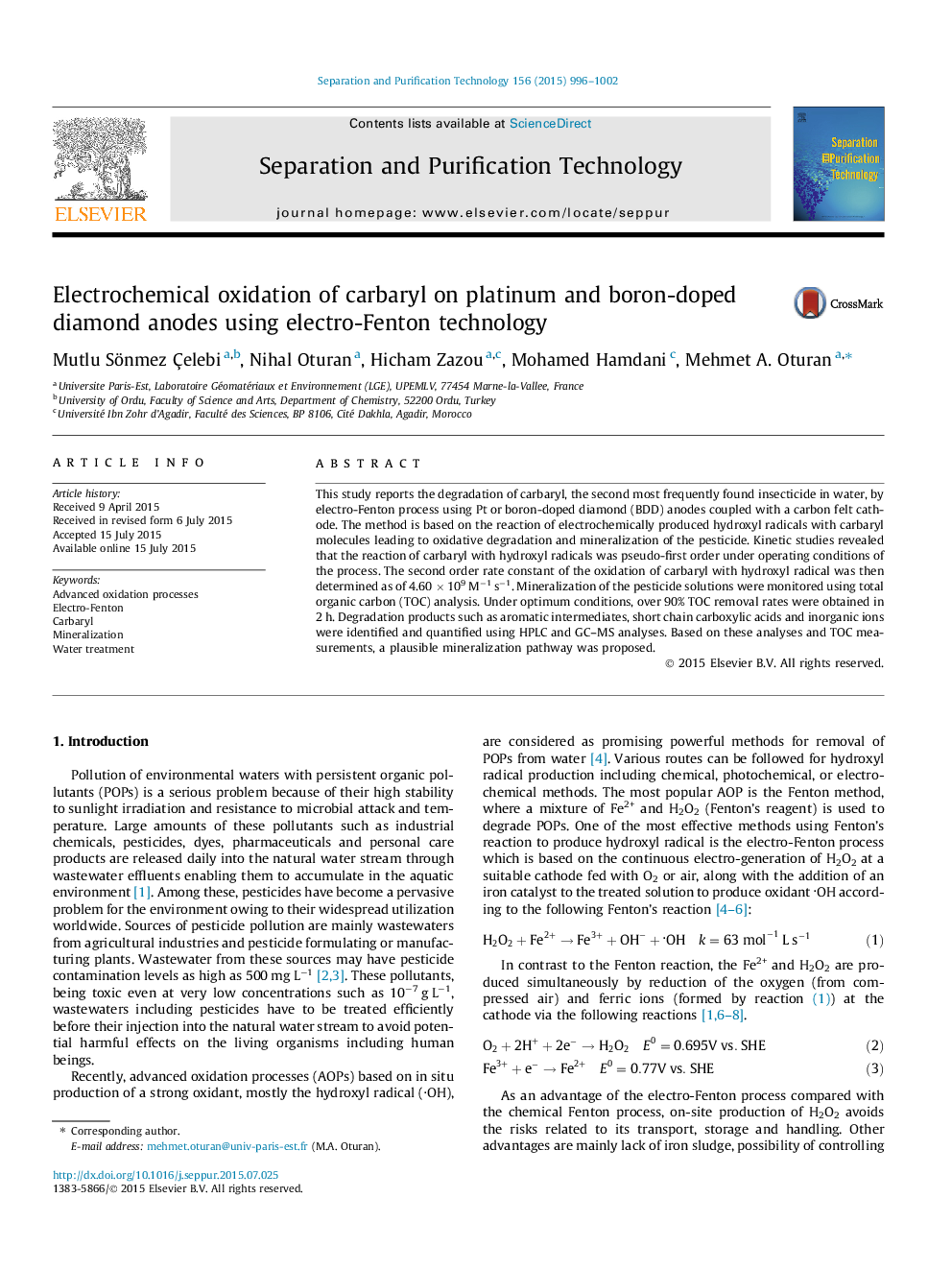| Article ID | Journal | Published Year | Pages | File Type |
|---|---|---|---|---|
| 640176 | Separation and Purification Technology | 2015 | 7 Pages |
•Effective removal of carbaryl – the second most frequently found insecticide – in aqueous medium.•Comparison of Pt and BDD anodes for degradation and mineralization of carbaryl.•Very high 2nd order reaction rate constant (4.60 × 109 M−1 s−1) for hydroxylation of carbaryl.•Over 90% TOC removal (as mineralization rate) obtained in only 2 h.
This study reports the degradation of carbaryl, the second most frequently found insecticide in water, by electro-Fenton process using Pt or boron-doped diamond (BDD) anodes coupled with a carbon felt cathode. The method is based on the reaction of electrochemically produced hydroxyl radicals with carbaryl molecules leading to oxidative degradation and mineralization of the pesticide. Kinetic studies revealed that the reaction of carbaryl with hydroxyl radicals was pseudo-first order under operating conditions of the process. The second order rate constant of the oxidation of carbaryl with hydroxyl radical was then determined as of 4.60 × 109 M−1 s−1. Mineralization of the pesticide solutions were monitored using total organic carbon (TOC) analysis. Under optimum conditions, over 90% TOC removal rates were obtained in 2 h. Degradation products such as aromatic intermediates, short chain carboxylic acids and inorganic ions were identified and quantified using HPLC and GC–MS analyses. Based on these analyses and TOC measurements, a plausible mineralization pathway was proposed.
